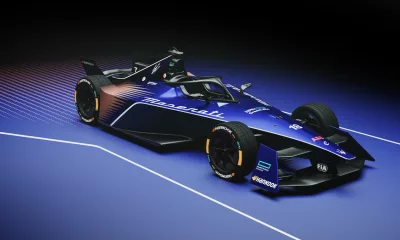The new Ford Ranger has ushered in a number of new technologies, such as semi-automated driver-assistance systems and far richer connectivity options but while such inclusions have been welcomed in many circles their implementation via the imposing SYNC 4 touchscreen that dominates the new car’s facia has met with mixed reactions.
How durable is the unit and why has Ford chosen to inject such technology into a vehicle that doubles as a workhorse for many customers? On our recent drive of the new Ford Ranger and in-the-metal meeting with the new Raptor, we spoke to T6 chief platform engineer and global chief program engineer for Ranger, Ian Foston, to find out more about the Ranger’s new interface.
Why has Ford decided to fit this screen in all of its new Ranger models?
Going forward, connectivity is a key area of development in the automotive industry as a whole. Where before such features were normally reserved for more upmarket models, our increasing reliance on connected technologies such as smartphones means all of our cars need to be able to accommodate such features. Take, for instance, the workhorse bakkie. Previously, these models were kept as basic as possible to keep costs in check and because there was little need for such functionality in vehicles working such fields as fleet and agriculture. Now, with the advent of connected fleet management services and the need for better communication between drivers of these vehicles, it makes sense to integrate such features from the outset rather than trying to implement them later in the product cycle. It’s a means of democratising connectivity for every type of user, from those using their vehicle as a workhorse to the lifestyle and family sets.

Aren’t there concerns about the screen’s durability?
Both the 10,1- and 12-inch displays have undergone the same rigorous testing schedule as the Rangers into which they’re fitted. This means that testing for vibration, heat and the ingress of things such as moisture and dust have been accounted for in its development. The screen features a layered laminate composite construction that’s similar to the Gorilla Glass you’d find on the screen of your smartphone, affording it protection against knocks and scratches. This construction also means that in the event of an accident, the screen won’t splinter into shards that could further injure occupants.
What about interface reliability?
You have to remember that whether you’re talking about a touchscreen or a physical switch, both rely upon relays and solenoids to transfer a signal from the user (a switch being flicked or a screen menu being pressed) to the system in question. In the case of physical switches, things such as repeated use over a long time period or the ingress of dirt and moisture can affect their function can lead to material fatigue, or impairment of motion or relay connection – things that are less likely to affect a touchscreen such as SYNC 4.

Are there other benefits to adopting SYNC 4?
Definitely. For one, it allows us to accommodate greater functionality into the vehicle’s cabin without resorting to dozens of switches on the facia – something for which earlier Ford models were often criticised. Migrating such functions into a central hub such as SYNC 4 not only affords access to richer connectivity features but also proves handy as a clear and sizeable display for off-road functions such as the 360-degree camera feed fitted to such models. It also contributes to a much cleaner cabin aesthetic that allows other design cues to really shine.
Will it ever be as intuitive as physical controls, though?
I believe it will be. While we’ve opted to go with the touchscreen for many of the cabin’s ancillary controls – an approach more auto manufacturers are adopting going forward – we’ve tried to balance it out with physical interfaces for systems that are often used on the fly. For instance, we’ve retained the dials and buttons for the broader features of the HVAC system, as well as the drivetrain select interface (dial for the terrain management and low/high range) and gear shifter. Our approach caters to both the more technologically astute and those who wish to be more hands-on in the control of their vehicle’s ancillaries. Even the SYNCH 4 interface, with features such as HVAC tuning anchored close to the physical switch panel and a card-driven graphical interface with a degree of customisation for regularly used features, is clear and straightforward, and it shouldn’t take users long to acclimate themselves with the system.










